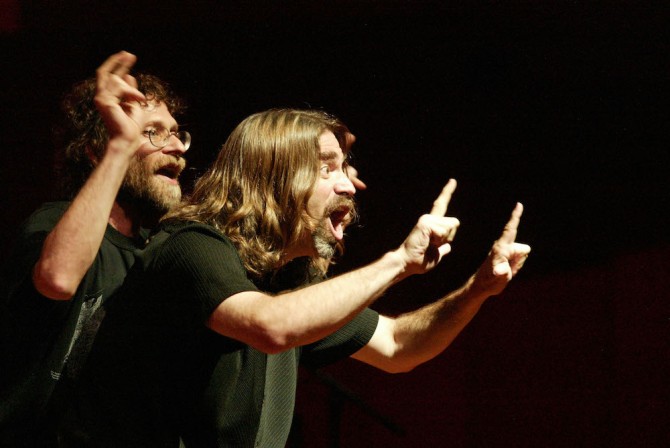American Sign Language Literature Series features ASL Poets/Storytellers
Six American Sign Language (ASL) poets and storytellers will visit Cornell between Oct. 12 and Nov. 28, in conjunction with this semester’s ASL Literature course in the Department of Linguistics in the College of Arts and Sciences.
American Sign Language does not have a standard written form, which leads to an erroneous tendency to discount ASL Literature as not being “real literature,” said series organizer Brenda Schertz, senior lecturer in linguistics (A&S). ASL Literature has a strong oral tradition where folklore, humorous stories and poems are passed down through the generations. Individual ownership of such stories has been rare, although rapidly-evolving digital video technology is changing the landscape.
The first presentations will be by Ben Jarashow on Oct. 12. From 2:45-4:00 p.m. in 110 Morrill Hall, he will present “Basic Principles of Stories with Handshape Constraints,” during an ASL Literature class open to the public. From 6:00-7:30 p.m. in 165 McGraw Hall, Jarashow will offer what he describes as a “visual journey filled with jellyfish, a grumpy wife, vivid imagery, and laughter.”
On Oct. 26 from 2:45-4:00 p.m. in 110 Morrill Hall, Patrick Graybill, known as the “grandfather of ASL Poetry,” will discuss his ASL poems “Defiance,” “Liberation” and “Reflection,” during an ASL Literature class open to the public. From 6:00-7:30 p.m. he will perform “Leaves of the Deaf Tradition” at 165 McGraw Hall.
On Friday, Nov. 4, from 6:00-7:30 p.m., Peter Cook and Kenny Lerner, collectively known as the Flying Words Project, will perform in Call Auditorium in Kennedy Hall. Schertz described their work as a “combination of American Sign Language poetry, movement, visual theatre, and above all, extraordinary poetry using three-dimensional imagery.”
On Nov. 28 from 6:00-7:30 p.m. in Rm. G78 Klarman Hall, Cassandra “Cassie” Simmons will perform “What My Life is Like,” consisting of narrations, both humorous and serious, of Simmons’ personal experiences as an African American deaf woman raised in Detroit.


